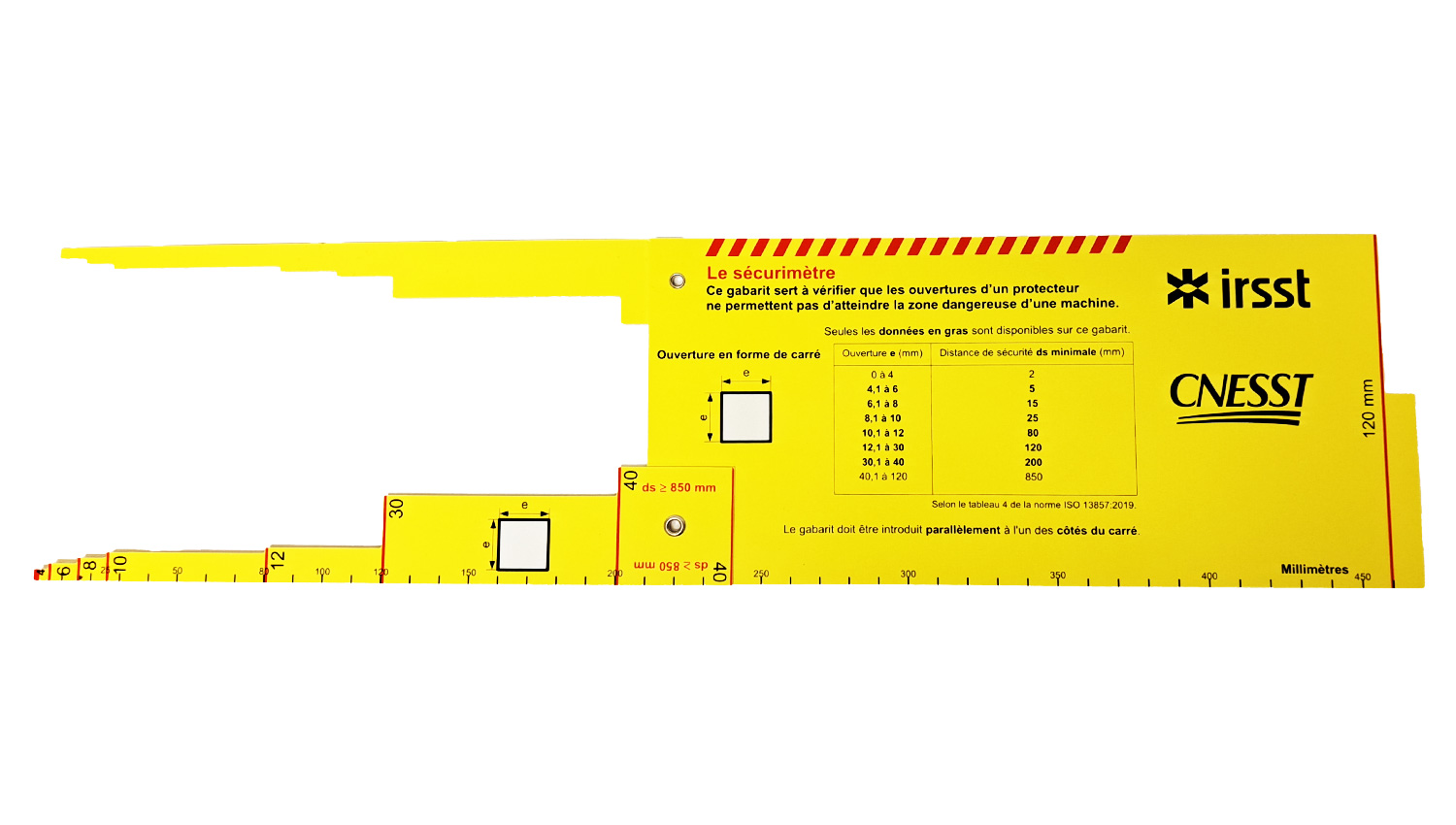How to use the securimetre?
 For a guard to be safe, openings must be narrow enough to prevent a finger, hand or arm from reaching in far enough to be caught or severed by a moving part, such as a motor, belt or gear.
For a guard to be safe, openings must be narrow enough to prevent a finger, hand or arm from reaching in far enough to be caught or severed by a moving part, such as a motor, belt or gear.
The SECURIMETRE that the dimensions of an opening in a guard comply with the safety standards in force for the machinery in question. You don't have the tool? No worries, you can buy it from various organizations or you can use your own measuring tape.
This tool helps the user find the following information:
- I know the safety distance and I want to know which shapes and maximum dimensions are possible for an opening in the guard.
- I know the shape and dimensions of an opening in the guard and I want to verify the minimum safety distance between the guard and the hazard zone.
In order to verify whether the guard is at a safe distance from the hazard zone, the following information is required:
- the distance between the guard and the hazard zone;
- the shape of the opening;
- the dimension of the opening.
1. Distance between the guard and the hazard zone: The distance between the guard and the hazard zone must be measured. To do so, the machine must first be turned off and checked to ensure that the distance can be measured safely. It can also be determined by consulting the plans. Generally, it is the shortest distance perpendicular to the guard.
It is also possible to use the plastic gauge of the securimetre (safe distance scale) to check without calculating whether the safety distance between the guard and the hazard zone is far enough.
2. Shape of the opening: this tool can be used to check different shapes: slots (a rectangular opening that is much wider than it is high), squares and circles. Irregular shapes can also be checked by determining which of the three regular shapes (slots, squares, circles) they can fit into.
3. Dimension of the opening: the relevant dimension of an opening is essentially the height of the slot, the side of the square and the diameter of the circle.
What is the role of a safety guard on a machine?
The role of a guard on a machine is to prevent a worker's access to the danger zone. If the guard totally prevents access, by being solid, it can be placed just a few centimetres from the danger zone. However, as soon as an opening is made in the guard, a finger or hand can reach the danger zone from the other side of the guard. It is therefore often necessary to position the guard further away to avoid damage to upper limbs.
What is the danger zone on a machine?
This is any space, inside or around a machine, in which a person will reasonably suffer damage if he/she accesses it with a part of his/her body (fingers, hand) that will be exposed to a dangerous phenomenon (cutting blade, gears, re-entrant angle, etc.).



